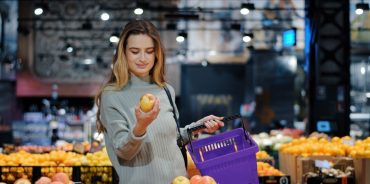No time to lose: why the future of AI-powered ranging is already here
Assortment. Ranging. Product mix. Call it what you will, it all boils down to one thing: giving customers more of what they want. And, like many other aspects of grocery retail, assortment has inevitably been drawn into the conversation around artificial intelligence (AI). And it isn’t hard to understand why.
Today, assortment is complex and time-consuming. It requires retailers to have a firm grip on everything from consumer preferences and inventory management through to emerging trends and competitor strategies. Shoppers may not realise it, but a huge amount of work goes on behind the scenes to get the right products to the right places. While this complexity makes life difficult for retailers right now, things could look very different tomorrow—by applying AI to ranging.
Picture an AI-powered ranging utopia. Gone, for a start, will be that tedious number crunching. Gone will be the need to think about the weather changing, or customers buying into a new flavour of soft drink. In this incredible future, all of that difficult thinking will be done by the machine—leaving retailers with the much simpler task of validating its proposals.
We’re not there yet. As with all things AI, there’s a gap to be bridged between latent potential and practical reality. At the same time, we’re not that far away either. AI is already having a huge impact on ranging, helping retailers to make better and more customer-centric decisions. That’s why I believe that it’s time to stop thinking about AI’s potential—and start talking about the impact it’s having right now.
New challenges demand a new approach
Regardless of format, regardless of size, assortment is something that every retailer needs to be focused on right now. Why? I think there are two key reasons:
- The right mix of products can give you an edge over the competition
What makes someone choose your store over the next one along? There are a lot of answers to that question, but product mix matters more than you might think. According to Google and Ipsos, for instance, 88% of shoppers say that variety plays a key role in helping them decide where to shop1.Today, every retailer wants to give customers a reason to visit their particular store—and a unique selection of products can provide that. It’s not just about being different, though; it’s about being relevant, too. A growing number of retailers are focused on hyper-local, store-specific product ranges, and that’s because doing so can serve as a genuine point of difference. - Changing that mix at speed is the only way to keep up with emerging trends
It’s hard to imagine now, but it wasn’t that long ago that a single bottle of Logan Paul and KSI’s Prime energy drink could be found listed on eBay for a cool £10,000 (about $12,500)2. Sales might have tailed off since, but the Prime furore is a reminder of the fact that demand for products can spike explosively, almost literally overnight.With innovation continuing to accelerate, and people becoming increasingly connected, trends are now moving faster than ever. Without the right intelligence—and the ability to change your product mix at speed—the risk is that the world will have moved along before you’ve had time to take advantage.
Both of these things are easier said than done. Even the process of creating a locally tailored range can be extremely complex. To do so, you need a deep understanding of the shopping behaviour in that specific locale. You need to be able to predict how products will perform, even if they’ve never been ranged there before. Moreover, you need to understand the store itself.
That latter point is particularly important. Think about it this way: why go to the trouble of creating a lineup of products that’s absolutely perfect for your customers if said range won’t fit on the shelves? So, as well as understanding shoppers, you need to understand the physical constraints of each store, too—what it looks like, what shelving it has, how many products can fit, and so on.
All of that, of course, is just for one store. To deliver this kind of vision at scale, you’d need that same level of insight into customer behaviours and layouts for every store. Then, you’d need to create individual planograms need for each. That’s what you might call a “non-trivial” amount of work.
The future is now
As noted in this recent post on localised assortment, all of these are problems that dunnhumby Assortment — our flagship ranging product—already solves for. We are applying groundbreaking AI to the challenges of assortment today, and delivering better results for customers in the process.
Take the trial that we did in the dairy category for one major retailer, for instance. When dunnhumby Assortment insisted that we over-indexed on protein shakes in one particular store, for instance, our first assumption was that there was a problem with the data. What actually transpired was that said store was located in the heart of a student town between two gyms.
Would a store manager have come to that conclusion on their own? Given their expert knowledge of the local area, almost certainly. What they might not know, though, is which products to remove to make way for that overstock, or what goods —often from a vast range—from the wider store universe might also be appropriate. And how could a retailer manage this across hundreds of stores in a region? Thanks to the AI in our tools though, they wouldn’t need to.
As we imagine the potential of AI tomorrow, let’s not forget it’s already with us today. And it’s capable of doing great things. Store-specific dynamic ranges might sound like the stuff of the future—but the truth is that they’re a tangible reality right now.
With an array of AI-powered features including automated planogram creation, intelligent assortment recommendations, and predictive analytics, dunnhumby Assortment can help you supercharge your teams and make better choices for your customers. Arrange a demo today.
1 Google/Ipsos, Global, Global Retail Study, 2019
2 Prime market: YouTube star Logan Paul’s £2 energy drink listed on eBay for £10k – The Guardian, 28 October 2022
TOPICS
RELATED PRODUCTS
Create customer-centric ranges using AI-powered science
Enable AI-Powered Assortment PlanningThe latest insights from our experts around the world
AI and data science in 2026: the trends everyone’s talking about



